You may have heard about TikTok, but are you unsure if you should allow your 12-year-old to download the app?
The minimum age requirement is 13; however, this video-sharing app is now available to younger children as well. There are also additional safety and privacy features for children on the platform.
If you’re curious about TikTok’s minimum age requirement, continue reading to learn more.
This article will look at what’s wrong with the app, the possible dangers, how to keep your child safe, and compare it to other similar social media platforms.
You might also want to read: Teen Hand Gestures Meaning With Pictures
- Is Tiktok Safe for 12 Year Olds?
- How Old Do You Have To Be To Have Tiktok?
- Why Does Tiktok Have A Minimum Age Requirement?
- What's Wrong With Tiktok?
- The Dangers of Tiktok for Younger Users
- Tiktok Vs. Other Social Media Platforms: What's the Difference?
- What Happens When Someone Below 13 Signs Up for Tiktok?
- The TikTok for Younger Users' Experience
- Tiktok Alternatives for Users Below 12
- What Can Parents Do To Keep Their Kids Safe On Tiktok?
Is Tiktok Safe for 12 Year Olds?

TikTok is safe for 12-years olds, but only the curated version for users under the age of 13.
If your 12-year-old tween wants TikTok, there are several things you can do to let them enjoy the fun side of TikTok while keeping them safe.
- Sign them up for the curated version for tweens under 13.
- Get your own TikTok account and educate yourself.
- Follow your child on TikTok.
- Use the Family Pairing feature on the app to link your child’s account to yours.
- Set their account to private.
- Speak to your child about the possible dangers of TikTok.
- Limit screentime on TikTok on the app itself.
How Old Do You Have To Be To Have Tiktok?
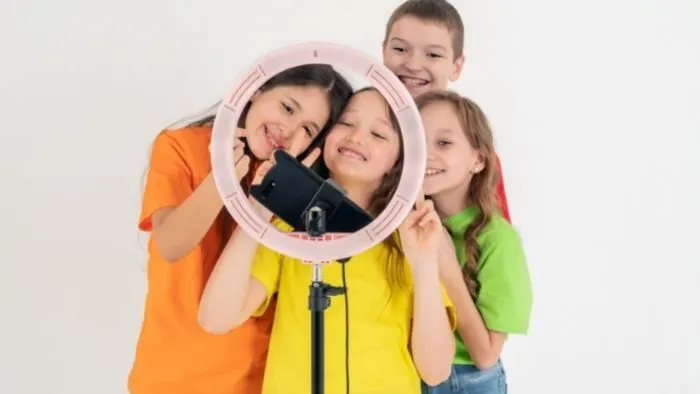
You have to be 13 years old to have TikTok; however, there is a version of the app designed for users under the age of 13.
TikTok does not have age-verification tools for new users, but it advises users to be at least 13 years old.
For users between 13 and 15, TikTok defaults the account to private, and users have to allow comments and approve followers.
Why Does Tiktok Have A Minimum Age Requirement?
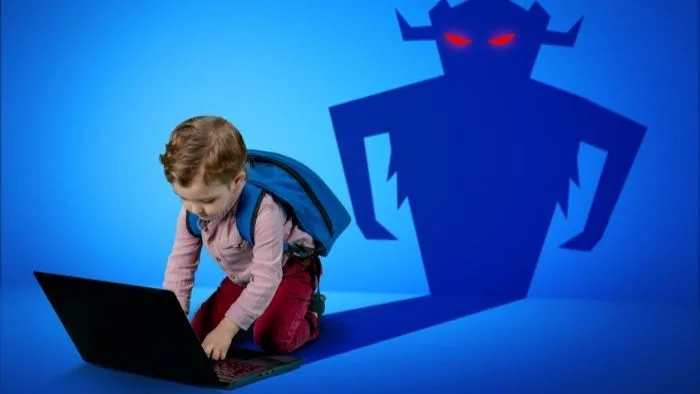
TikTok has a minimum age requirement to keep children from using the app if they are not old enough. This prevents underage kids from accessing inappropriate content and features such as direct messaging.
As with all social media, children can be exposed to inappropriate content, adult predators, and cyberbullying. It is therefore critical that teens are old enough to understand and navigate the possible dangers.
What’s Wrong With Tiktok?

TikTok does not have age-verification tools; therefore, younger users can be predisposed to age-inappropriate content. It is an open-to-all app that allows users to create all forms of content, which might not be appropriate for younger audiences.
However, most kids use TikTok to create, watch or share short funny videos. Videos are often dance or lip-syncing creations based on popular songs. There are loads of cool functions and tools that they can play with and use to create their videos.
It is up to parents to monitor their kids’ activity on TikTok, especially if they are under 13 years old.
If you don’t know what TikTok is, then watch this quick video:
The Dangers of Tiktok for Younger Users

A video-based social media app has exploded recently, allowing young users to gauge their social status and popularity by creating and posting their own creations and watching videos posted by other users.
Like other popular social media platforms, TikTok has its fair share of dangers for its younger users.
Spread of Misinformation
TikTok does not have a content regulation strategy; therefore, all users are free to post whatever they create. This leaves space for users to spread misinformation on trending topics and news, negatively impacting how younger users consume content.
Younger users on Tiktok learn and seek inspiration from what is posted, and in many ways, this can expose them to the wrong information.
Since this is hard to regulate, users can easily believe the inaccurate information and make bad decisions from their content.
Read more about How To Teach Teens to Fact Check Media They Consume.
Unregulated content
TikTok does not regulate the kind of content that users post, predisposing younger users to be explicit or age-inappropriate content. The TikTok feed does not filter what shows up as you scroll and allows users to follow any account they like.
While the age-limit gate works to limit interactions for younger users, access to the overall content on the TikTok feed is not regulated. Younger users can easily watch suggestive content that is not designed for them, increasing the dangers of consuming mature content.
The app is broken into a public “For You” feed which is where you can explore new content. The “Following” feed is where you’ll find more personally curated content from people you choose to follow.
Even if your account is set to private, you may still be exposed to sexual or violent content that appears in the public “For You” feed.
There is a wide range of concerning content on TikTok, from overtly sexual video content to physically dangerous stunts or challenges for kids to overtly racist and discriminatory content.
Unsupervised Communication Between Users
With a regular TikTok account, users can freely interact with other users, publicly and privately. Unsupervised communication between users can expose younger users to explicit content, negative comments, abusive users, etc.
Younger users may not be equipped with the right skills to maneuver unfiltered information on the app, impacting their overall mental health and how they relate with people on and off social media.
In 2021 TikTok changed the default for users aged 13-15 from “public” to “private.” This means that only someone the user approves as a follower can see their videos. All videos created by anyone under 16 can also not be downloaded.
Even with the family pairing feature on Tiktok, it is still challenging to monitor what users send to the paired accounts. There is still a possibility of other users sharing insensitive messages to linked accounts.
Presence of Pedophiles and Sexual Offenders
Since TikTok is an open-for-all social media platform, pedophiles and sexual predators have access to creating accounts and using them unregulated. This is not only dangerous in terms of the content they share but also the kind of users they interact with.
Pedophiles and sexual offenders are usually after naive, younger users on social media, and it is practically challenging to catch and restrict online predators from using TikTok.
Since TikTok is one of the most popular social media platforms with younger users, it has become a hotbed for pedophiles and sexual offenders. With the influx of younger users comes an increased chance of predators getting to them, yet there is no security keeping these people off the platform.
Body Shaming
Tiktok is lighthearted and fun, for the most part, but it has opened doors for people to attack others based on how they look. Although body-shaming is rampant on all social media platforms, it is quite significant in TikTok with the large numbers of young users.
Body shaming can be damaging to young users’ mental health, especially because most of them seek inspiration from their peers on the platform. This makes them believe that they are equally not attractive as their favorite TikTokers that undergo body shaming.
Abusive comments about people’s weight and body features make people insecure, and it doesn’t matter whether you are a popular TikTok user or a mere follower.
Cancel Culture
The cancel culture on TikTok and other social media platforms is not only a recipe for low self-esteem but a component of increasing mental health issues. Cancel culture is when other users call out a user and publicly shame them for a mistake they made with the intention of hurting them.
Tiktok can be a toxic environment, with users judging every little detail of the other and calling them out for the content they create. This can be tough for younger users, as most bullies are out to diminish self-confidence and worth.
Calling someone out can sometimes be necessary, especially if a user promotes information that is not fit societal values. However, there are no boundaries regarding what deserves canceling and what doesn’t.
This leaves room for many users to do as they wish without considering how the one on the receiving end takes it. And, for younger users, it is challenging to overlook and not let it get to them.
Cyberbullying
Cyberbullying is a big issue on TikTok like it is on other platforms. It is particularly a problem for content creators who are not deemed ‘good enough’ or those who do not ‘look good enough.’ Hateful comments and outright insults on a creator’s post are a source of cyberbullying.
Younger users on TikTok are prone to cyberbullying, especially because they seek validation from their followers and others that watch their content. This is dangerous as it opens a space for people to judge them harshly, react to their content and bring them down.
When users duet or react to other videos, the videos appear side by side. This has led to TikTokers taking videos that they deem ‘cringeworthy’ and making fun of them. Although most comments and interactions are kind, people can be really cruel as well.
The effects of cyberbullying go beyond a hateful comment on a creator’s post. Cyberbullying can quickly dwindle someone’s confidence and easily bring about mental health struggles, especially in this age where social media has become a source of inspiration.
Negative Impact On Mental Health
Social media is good in its own right, but it comes with downsides. TikTok created a space for people to get creative and share their lives.
While platforms like TikTok can bring people together in many ways, they also increase the chances of many users suffering from mental health issues. Like in every social media platform, hate speech, mean comments, and body-shaming are significant issues that negatively impact mental health.
Younger users on the platform may not have the right tools to navigate this, heightening mental health issues.
Your tween might come across and follow hashtags that promote dangerous behaviors, such as self-harm, eating disorders, and cutting.
You can filter out spam, offensive comments, specific keywords, and block accounts, but filters can’t catch everything. Hashtags may change frequently, and creative spelling may allow people to get around filters.
TikTok has added a “Digital Wellbeing” setting to set time limits on app use. Parents can also block videos that have been flagged as inappropriate.
Data Privacy
TikTok shares data with third-party providers that are part of the platform. TikTok also shares information with its business partners and advertisers to help curate the app’s operation strategies. This leaves concerns about how safe user data is on the platform.
Even when the app is not in use, it is unfortunate that it collects information from your phone’s clipboard. If you copy and paste sensitive information or private conversations, TikTok picks and stores that information.
This is not directly dangerous, but any sensitive info collected on your phone impacts what shows up on the feed, exposing young users to sensitive or explicit content.
Tiktok Vs. Other Social Media Platforms: What’s the Difference?
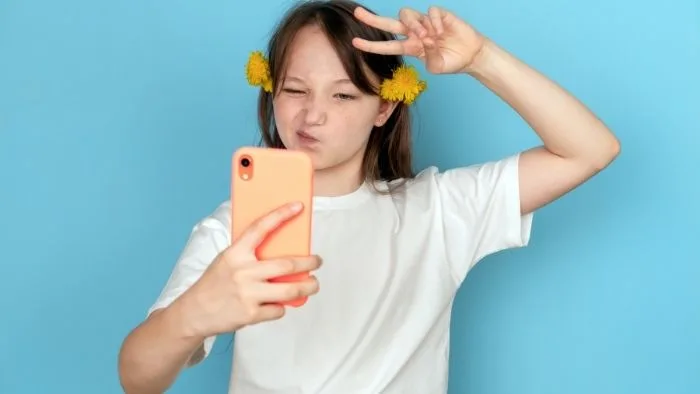
The difference between TikTok and other social media accounts is in the type of content, which for TikTok is short-form videos focusing on sound and movement.
TikTok’s mission, ‘Inspire Creativity and Bring Joy,’ aims to grow creativity by requiring users to learn editing skills to implement voiceovers, sound effects, filters, and other effects.
What Happens When Someone Below 13 Signs Up for Tiktok?
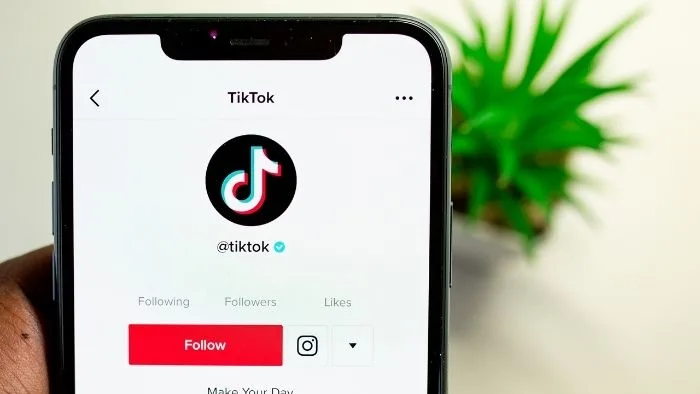
Anyone below 13 can sign up for the curated younger users version of TikTok. However, someone below 13 can access TikTok’s general feed if they use a date of birth that indicates they are older.
Tiktok requires new users to fill in their date of birth to ensure users above 13 can create new accounts, but there is a curated version for users under 13 that is safer for younger users.
Children under the age of 13 can use a version of TikTok where they can create videos but not post them, and they can only see videos deemed appropriate for children.
In the curated version for younger viewers, all accounts are set to private by default; the service turns off the setting “Suggest this account to others,” and it restricts commenting.
The TikTok for Younger Users’ Experience
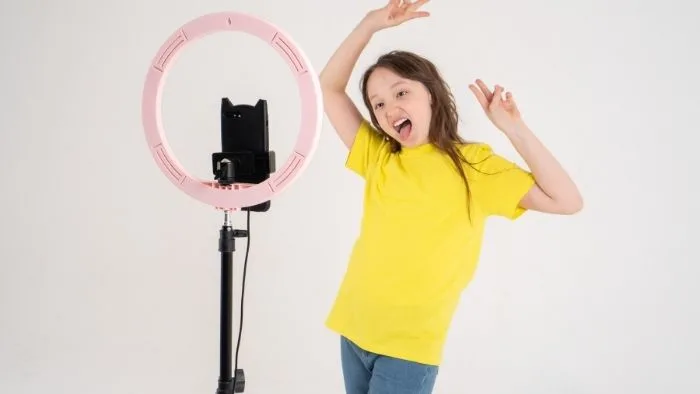
TikTok for younger users is a curated version for users under 13. New users must pass through the age-limit tab to use and engage with TikTok’s fun video features while limiting the information collected. Users have a limited interactive experience and cannot exchange direct messages with others.
“Within TikTok for Younger Users, users are provided a viewing experience that does not permit sharing of personal information and puts extensive limitations on content and user interaction. In this ecosystem, users cannot do things like share their videos, comment on others’ videos, message with users, or maintain a profile or followers. However, they are able to experience what TikTok is at its core – showcasing creativity – as they enjoy curated content and experiment with TikTok’s unique, fanciful, and expressive features.” TikTok Newsroom
Tiktok Alternatives for Users Below 12
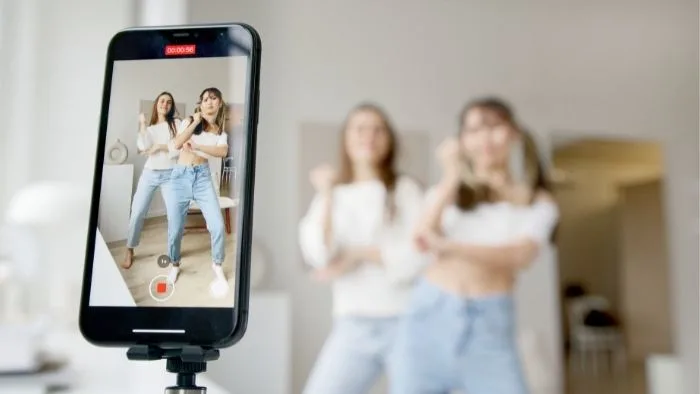
If you’re looking for Tiktok alternatives for users below twelve, you’ve come to the right place. There are several free TikTok alternatives for users under twelve. Some of them have educational value, while others are solely for entertainment. Below, you can check our list of the best short-form video app alternatives like Zigazoo, Funimate, Triller, and others.
Zigazoo
One of the most popular video apps for kids is Zigazoo. Founded by former elementary school teachers who were frustrated with the lack of educational content for their kids, Zigazoo allows kids to create and share short video clips. It has over 20 million views and has garnered $4 million in funding. Many famous people and brands have also endorsed Zigazoo. But are there other apps for kids that are just as fun and rewarding?
Zigazoo is a safe social media app where kids can explore their creativity, have fun and share their experiences online. It is similar to TikTok but is specifically designed for kids, with features that are easy to use yet protected to ensure only age-appropriate content.
Like TikTok, Zigazoo is a short-form video platform. Kids utilize it to make creative video responses to challenges. They can then share their responses with other kids and engage based on the challenges they participate in.
Zigazoo is meant to be used with a parent, as personal information is treated similarly to users over 13. Thankfully the app has parental controls on privacy settings, even though it is highly regulated for kids under 13.
While TikTok has become a global phenomenon, it is not free from ethical concerns. A recent article in The New York Times exposed “kidfluencers” – parents who use their kids to endorse brands and make money from their presence online. Zigazoo was created to address these ethical concerns. Its aim is to be a safer platform for kids.
Funimate
If you are a social media user and are under the age of 12, you might be interested in learning more about Funimate, an online video-sharing application. The app allows users to lip-synch to melodies and entertain their audiences with silly videos. It also allows users to use emoticons, moderate movement, and writings to share their videos. It is important to note that Funimate does not allow users under the age of 12 to upload videos with inappropriate content.
Funimate is a useful app created to help kids explore their video streaming and editing skills. It is a fun platform where users can create videos and polish them to post on other social platforms.
TikTok users favor this app thanks to its friendly interface. It does not have an age limit, so kids under 13 can use it. But, like with all kid-friendly apps, parental control is advised to ensure online safety concerning the content kids consume.
Like TikTok, Funimate provides a platform where kids can learn how to edit, create short videos and share them with their followers. It also offers a large library of music, stickers, and video effects. While Funimate does not offer Duet functionality, it does allow users to create a group video and collaborate with others. There are in-app purchases that can increase the features of your videos, though.
It is a great alternative to TikTok as it gives the same user experience without the worry of kids coming across explicit or questionable content.
Likee
Likee is a global short-video creation platform that allows users to come up with videos and share them online. Users can comment on each others’ content and message privately, like on other social media platforms.
The app features an audio library where users can select music for their videos. It also allows users to upload their own music to create even more unique videos. There are no age restrictions when signing up, meaning it is safe for kids and teens.
But, like with every platform, it is important to control your child’s activities on the app. It can feature inappropriate content; therefore, the need to manage the kind of content your child is exposed to.
Triller
Triller is a social media platform where users create videos, add music and share with others. It comes with features similar to TikTok, including filters and effects. And it allows creators to share content on other social media platforms.
Triller is a great app for tweens and kids to explore their creativity while having fun. They can create music videos, follow and participate in challenges and grow a community. It is particularly useful for kids that enjoy music and are interested in creating dance videos.
Trillers interface is user-friendly and takes just a few minutes to create videos and share. It mimics TikTok in many ways, but it is safer and more appropriate for kids under 13.
Cheez
Cheez is a short-form video-sharing app that allows creators to post 17-second videos on their feeds. The content is entirely user-created, allowing users to explore their creativity and post just about anything.
While this is good for creativity, it leaves loopholes for users to include harmful content on the app. But, with parental control, this is easy to manage and maintain the app’s safety for younger users.
The good thing is that Cheez does not allow direct messaging or access to friends, leaving the only interaction between users to likes and comments.
Grom Social
Grom Social is a networking app designed to accommodate kids while providing a platform where they can get creative and interact with others. Grom Social allows kids to create 15-second videos, edit them and share them with others around the world.
The app gives kids a social networking experience while protecting them from dangers associated with the internet. Users can share videos, comment live, use hashtags, stream video content, send direct messages and use music.
What Can Parents Do To Keep Their Kids Safe On Tiktok?

There are several things that parents can do and parental controls that they can use to keep their kids safe on TikTok.
Use The Family Pairing Feature
Parents can keep their kids safe on Tiktok by using the Family Pairing feature on the app, where they can link their child’s account to theirs. This feature allows parents to control direct messages, set screen limits, and turn on restriction mode from their phones, sending alerts to parents if these are violated.
Educate Yourself & Have Your Own TikTok Account
Check out the app yourself. Spend some time scrolling and looking and checking out the settings.
Set Their Account To Private
You can protect your child’s user experience by setting their account to “private.” Only people you approve are able to follow, comment, and like videos on a private account.
If you do choose to have a public account, you can turn off “Allow others to find me,” and control who can comment on your videos, react to them, duet with you, send you messages, and view the videos you like.
Limit Screen Time
Remember to limit screen time overall. Using the Digital Wellbeing feature, you can set limits within the TikTok app and specify the screen time from 40 minutes to 2 hours.
Talk To Your Child About The Possible Dangers
Most importantly, though, is that you discuss the dangers of social media with your kids. Let them experience low-risk situations to be more equipped to navigate things when they’re older.
Kids will test the limits when they become teenagers, and you won’t have much control over what they see. They need to understand the ramifications and dangers of social media and realize that what they put out there will be there forever and for everyone to see. Discuss why it’s dangerous to accept friend requests from people they don’t know.
Watch this video to see how to set up your child’s TikTok profile for safety:
